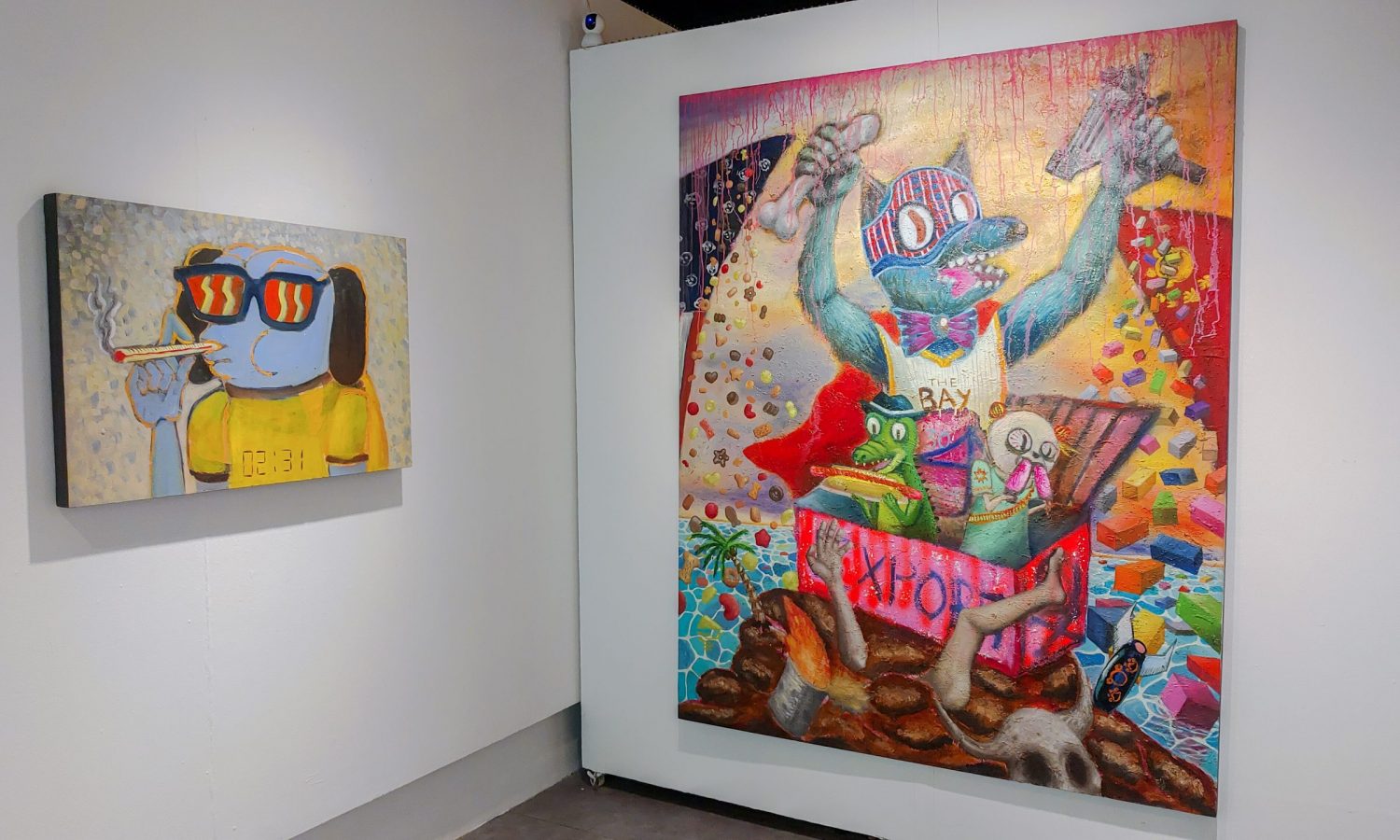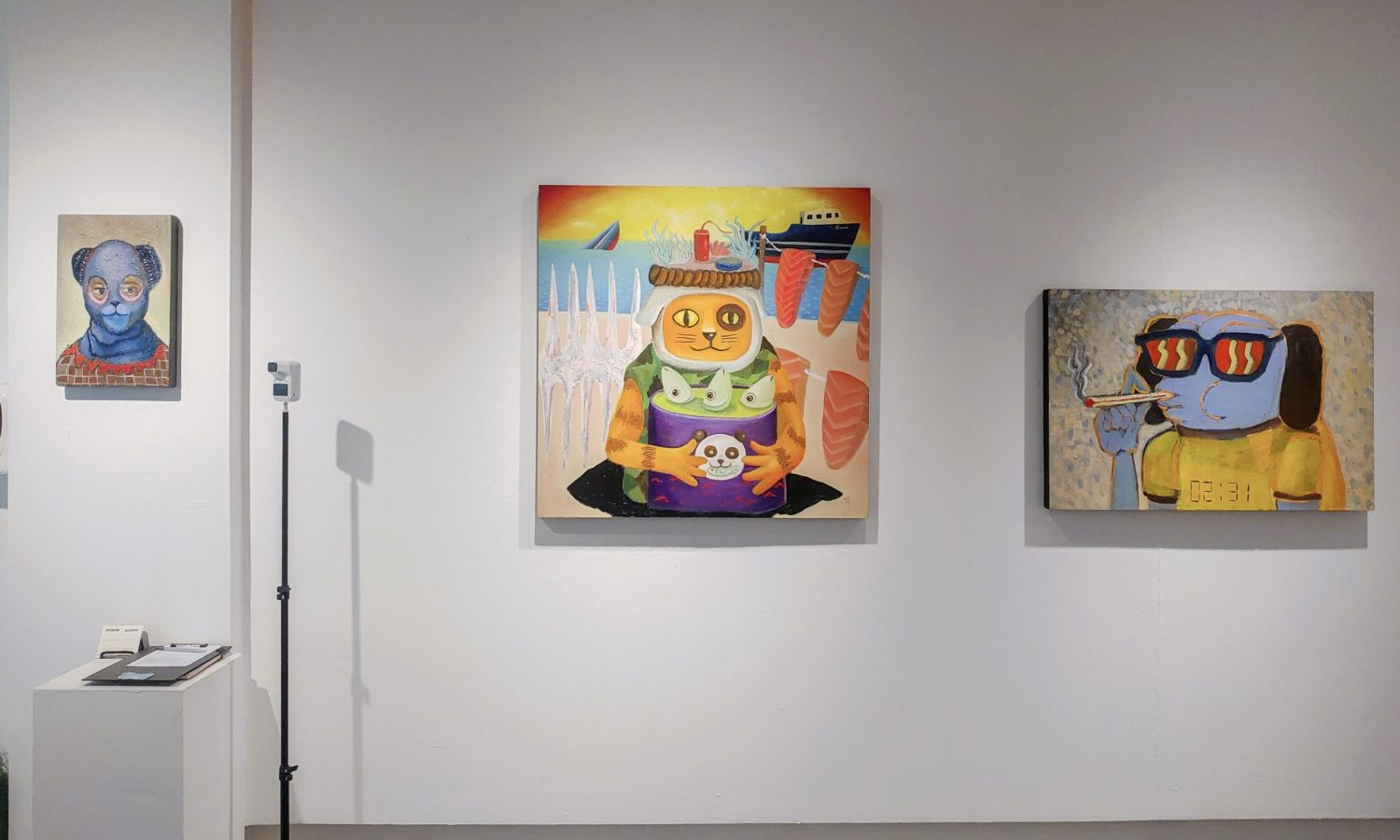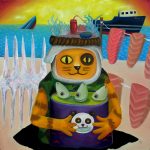PURE METHAMPHETAMINE EXTENDED
Bam Garibay
September 15, 2021
PURE METHAMPHETAMINE EXTENDED
WRITTEN BY ELLE LUCENA
Pure Methamphetamine Extended draws reference to the methamphetamine drug, a stimulant often used recreationally and at times prescribed as treatment for various ailments. Its history is one entrenched in conflict, as well as politics, and decades after its first introduction to the public scene, it still remains to be one of the notable substances with a remarkably high addiction and dependence liability. In his latest solo exhibition, artist Bam Garibay reimagines such substance abuse as one no longer codified into a rigidly-defined spectrum, instead situating it within a more encompassing, globalized, and largely 21st century frame of reference. Addiction is depicted as something that goes beyond the physical, one that manages to weave itself seamlessly into our everyday lives, tempting us to stay enveloped within its wantonly deceptive embrace as it continues to hold a dominating presence over our collective quotidian affairs.
Garibay expounds on this notion by offering an alternative to how we traditionally view addiction, suggesting that perhaps, they also come prepackaged in various forms. His pieces present anthropomorphic subjects engaged in a myriad of activities, set distinctly against fantastical, chromatic backdrops that arrest the eyes and attract interest. But while colourful and absorbing, there also lies, at its core, a critique on the complex issues that plague us today, as well as the elements that play a key role in their authority. The works construct a picture of an increasing dependence on foreign goods and services which, while seemingly non-evil in its original intent, has been culled according to their use and ability to extend influence over people. In the piece titled Omakase, for example, we see the figure of a cat seated cross-legged along a coastline. Gliding on the waters are two ships, one still afloat and the other halfway submerged under the waves. They take prominence in the background, but at the forefront of the piece the subject sits attentively holding the audience’s gaze, seemingly unaware (or not) at the tragedy occurring on the sea as well as the looming threat of what looks to be a dynamite stick atop its head. The danger isn’t always imminent, though in this case it rather is. Yet what Garibay intends to display is its inevitability, and how such a condition arose as a result of our inescapable descent into the depths of addiction. As a result, foreign products have become precisely that—objects we vapidly devour, sold and packaged attractively to the public, thereby creating a lifestyle that is dependent on its consumption. Likening this way of life to pure, unadulterated methamphetamine—addictive, harmful, and unhealthy—the pieces in the exhibition highlight its prominence in society, and how we are persuaded to look past its deceptive nature and instead focus on the pleasure it allows us to experience.
But this critique that the artist delineates posits another concern—that at length, such addiction alters our judgment and morals, and keeps us in an endless cycle of chasing after a high that is ultimately unreachable. What then emerges is a social infrastructure marred by the need to fill this overwhelming pattern of emptiness and inadequacy with something more tangible. Garibay’s subjects—depicted in the form of animals—serve as parallels to how we have likewise come to be guided more so by primal instinct than rational thought, as we endlessly pursue the familiar comfort that these material goods allow us to feel. For many, these attractively-packaged products are easy to grasp and within reach, and perhaps its accessibility is its most enticing feature. But what it fails to reveal are the multiple ways it manages to reshape not only our identities but also our state of mind and being. In the end, beneath all the charm and allure, it paints the picture of a fragile society steadily veering towards the brink of ruin.










